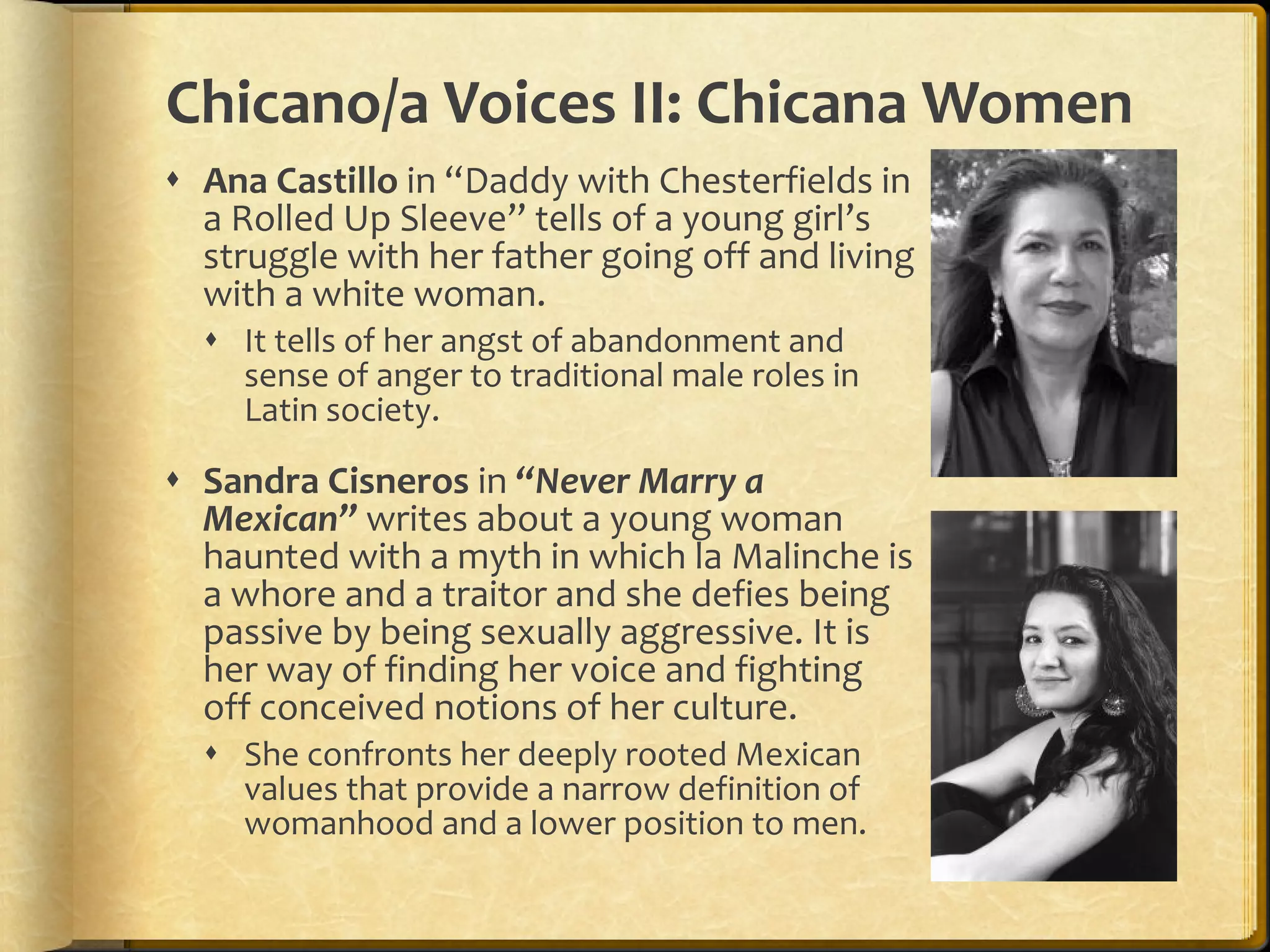The document summarizes several works from Chicano/a literature. It discusses Gloria Anzaldúa's essay "How to Tame a Wild Tongue" about her struggle with identity as a Chicana and her border language. It also mentions Richard Rodriguez's piece pondering ethnicity and whether Native American culture has assimilated. Two works by women authors addressing Chicana identity and gender roles are summarized. The document concludes with brief overviews of pieces that portray the Mexican immigrant experience and search for identity along the US-Mexico border.




